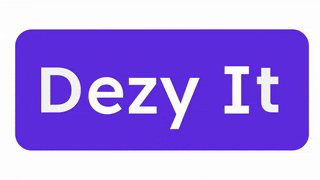How Johns Hopkins Medicine Uses AI to Reduce Wait Times and Optimize Resources
- sia699
- Dec 18, 2024
- 2 min read
Updated: Apr 1

Johns Hopkins Medicine in Maryland is leveraging artificial intelligence (AI) to address some of the most common challenges in healthcare: resource allocation and patient wait times. With real-time analytics powered by AI, the institution is setting a benchmark for operational efficiency and patient-centered care. This blog explores how AI is transforming healthcare management and the practical implications for both patients and healthcare providers.
Real-Time Analytics in Action
At the core of Johns Hopkins Medicine's approach is the use of real-time analytics to track patient flow, bed availability, and staffing levels. By analyzing data from the hospital’s electronic health record (EHR) systems, AI provides actionable insights that allow administrators to make informed decisions quickly. For example, predictive models help determine the busiest times in emergency departments, ensuring that staff and resources are appropriately allocated.
Studies have shown that AI-driven analytics can reduce patient wait times by up to 30%, significantly improving the overall patient experience. This not only minimizes delays for critical care patients but also alleviates stress for healthcare workers managing overcrowded facilities.
Optimizing Resource Allocation
One of the standout features of AI in healthcare is its ability to predict resource needs. Johns Hopkins Medicine employs AI tools to forecast demand for operating rooms, medical equipment, and even staff schedules. This proactive approach reduces inefficiencies, helping the hospital save time and money.
For instance, during peak flu season, the AI system can identify trends from previous years and recommend scaling up staff in specific departments. By acting on these predictions, the hospital avoids shortages and ensures patients receive timely care.
AI-Powered Communication for Patient Updates
AI isn’t just a backend tool—it also improves patient-facing processes. Conversational AI systems at Johns Hopkins Medicine provide automated updates to patients about their expected wait times, bed availability, and appointment changes. This transparency builds trust and reduces patient frustration.
Additionally, AI systems can send reminders for follow-up appointments or post-discharge care, increasing patient retention and adherence to treatment plans. These systems are particularly effective in surgical departments, where patients often require extensive preparation and aftercare guidance.
Broader Implications for Healthcare
Johns Hopkins Medicine’s use of AI illustrates how artificial intelligence in healthcare can address systemic challenges like overcrowding and inefficient resource use. Beyond improving individual patient experiences, these innovations have far-reaching implications for hospital management and cost savings.
With more hospitals adopting similar AI technologies, the healthcare industry is moving closer to a future where administrative hurdles no longer compromise patient care.
Johns Hopkins Medicine’s AI-driven strategies demonstrate the potential of real-time analytics to transform healthcare operations. By optimizing resource allocation and reducing wait times, the hospital is setting a new standard for patient-centered efficiency.
Learn more about AI in healthcare examples.
Read about conversational AI in healthcare.
Discover insights on electronic health record analytics.
Learn More:

